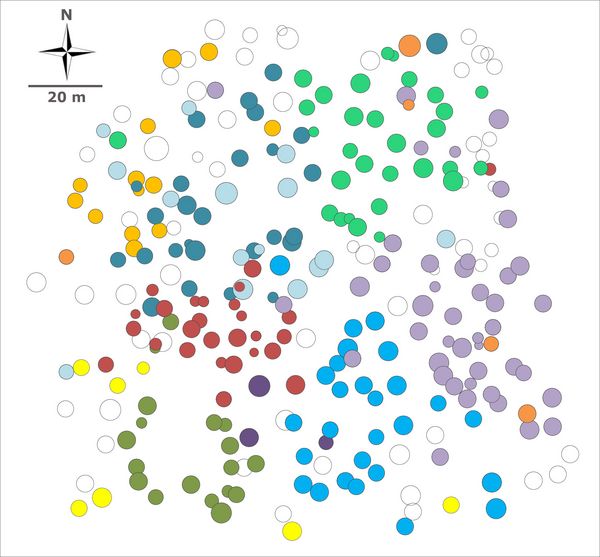Expertise
Stir it up: The genetic diversity of beech
Pascal Eusemann | 26.01.2023
Genetic diversity is a prerequisite for adaptation to climate change. Especially in managed forests, it is therefore indispensable to know how it can be conserved and promoted.
Beech is one of the most important forest trees in Germany. Among deciduous trees, it is our most important tree species both economically and ecologically. This is because it occurs almost everywhere in Germany and would naturally be the main tree species in most areas. Accordingly, there is a great deal of interest in understanding the biology of the species and in investigating the extent to which humans have influenced beech forests in Germany during their long period of use.
Genetic diversity plays an important role here, as it is the basis for adaptation to changes in environmental conditions. This is particularly important for tree species that are predominantly naturally regenerated, i.e. where the next forest generation is not newly planted but produced naturally by the old trees of the current generation. In this type of regeneration, a loss of genetic diversity can lead to a deterioration of adaptability in subsequent generations. Beech almost exclusively regenerates naturally in Germany, therefore it is of great interest to understand its genetic diversity and the processes that shape this diversity.
First, it is important to understand how diversity within a beech stand is transferred from one generation to the next. Beech is wind pollinated, so pollen from one tree can theoretically be transported over long distances to distant trees. At the same time, it has heavy seeds in the form of beechnuts, which do not spread far from their parent trees because of their weight.
Comparative studies showed that beechnuts indeed mainly spread within a radius of only 5-15 meters around their parent tree. At only about 20 meters, even the majority of the pollen does not fly much further than this, at least in the dense forests with closed canopies typical for beech. Of course, smaller parts of the beechnuts and pollen also spread much further around their parent tree, and the pollen can even fly for kilometers under favorable conditions. Under natural conditions and near-natural management, this causes typical genetic structures to develop in which local populations differ significantly in their genetic composition, but nevertheless remain in genetic exchange even over greater distances. This allows the species to adapt to local environmental conditions while preventing it from fragmenting into different local forms across its European range.
Interestingly, apparently only a small part of the trees is involved in reproduction within a single year. On average, only about one third of the mature trees can be found as parents in naturally regenerated young plants. In the studies to date, however, the saplings examined probably originate from only a single to very few years of reproduction. Therefore, it remains an exciting question for future research to clarify whether the parents involved in reproduction remain the same or change from year to year.
Due to these life history features of reproductive biology, human management directly effects the genetic diversity of beech forests.
Beech forests are regenerated mostly naturally. In naturally regenerated forests, genetic diversity is particularly related to the number of trees used for regeneration. The greater the number of parent trees involved, the higher the genetic diversity in the subsequent generation. From a genetic point of view, management strategies in which only a few trees are harvested at a time are advantageous. The resulting gaps in the forest are filled by descendants from the remaining stand. The resulting long period of use also compensates for the fact that only a fraction of the trees participates in regeneration in every single year.
In the course of forest conversion, on the other hand, large areas of coniferous forests are being converted into more climate-stable mixed forests. In these, beech often plays an important role. These new beech forests have to be created by planting. Contrary to what may be widely believed, the genetic diversity in such artificially created stands is often very high. This is due to the fact that beechnuts are not harvested from individual trees, but are collected with nets as they fall to the ground. As a result, beechnuts from numerous different parent trees are incorporated into the seed obtained. If a new stand is planted using seed from different beech stands, the new stand will have a higher genetic diversity than could occur in a naturally regenerated stand.
The genetic diversity of natural and naturally managed stands always represents an adaptation to the particular site and its environmental conditions. This is not yet the case in the first generation of a planted stand. Here, the adaptation process has yet to take place. Therefore, especially when planting new stands, a high genetic diversity is a basic prerequisite to enable the selection of those young beech trees that are best adapted to the environmental conditions at the new site.
If such a new stand later regenerates naturally, this initial adaptation step will continue and the genetic diversity will become similar to forests that have been regenerated naturally for several generations. In this process, it may well decrease in comparison to when the stand was planted, but will represent diversity adapted to the local site conditions.







